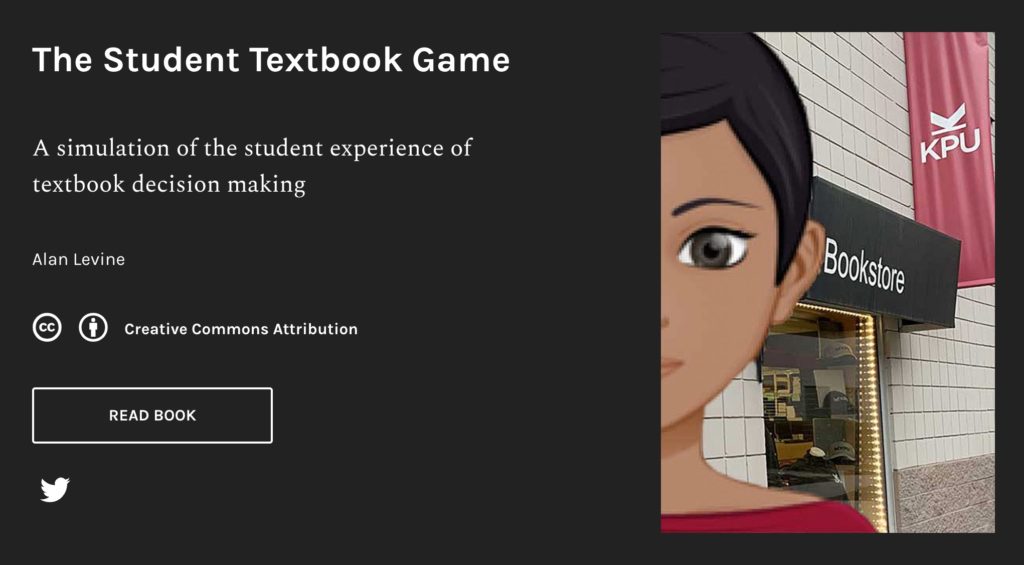One of the more sophisticated utensils in the H5P drawer is the Branching Scenario content type. It allows you to create situational experiences or game-like interactions, where the viewer has to make decisions that lead them to variable results.
The advantage of having an H5P tool to cook one up with is that other approaches require use of complex game development platforms, but in H5P it’s something more approachable. Quite a few of the examples where it has been used well is in health fields, to put you in the seat of dealing with situations where decisions are critical.
The Skills Practice: Home Visit example shown on the Branching Scenario content type was built at Ryerson University (it looks like a prototype for the version currently available). But it shows how video is used to set up situations where the “player” is a health worker paying a home visit.
I worked on a project earlier this year where we attempted in H5P to create an online version of student designed card game from Kwantlen Polytechnic University that was aimed at sharing the experience of textbook purchasing situations.
To be honest, it grew to be likely overly complex, but building this in H5P gave me an appreciation for what the branching scenario tool could do, as well as how to create end arounds for what it could not do.
You can experience this within an H5P in Pressbooks space at https://kpu.pressbooks.pub/gamelab/
And if you want to learn more about the making of it, a long long blog post awaits you.
If you are looking for more examples of the H5P Branching Scenario, see:
- The OpenRN project provides an extensive series of Virtual Simulations built in H5P – the Google doc not only provides links to the open licensed simulations, but also teaching plans for using them. For example, see the simulation from Chippewa Valley Technical College created to respond to a male patient entering a clinic complaining of chest pain (and accompanying teaching plan)
- Another health related Branching Scenario, Acute Medicine, was created at the University of Edinburgh. Look for some behind the scenes of this one in a blog post by Jackie Aim.
- Students at the University of Windsor have create Branching Scenarios to support online teaching. See Staying Motivated During an Online Semester and What NOT to do in a virtual classroom.
- There is a place for branching scenarios in teaching processes, like for electronics, how to perform a simple horn circuit diagnosis created by Cali Chorkawy at Mohawk College.
- Rachael Gallant (Lakehead University) created one to help students learn how to live with roommates.
- For Business and Communications, see Wael Nawara’s Recapturing your Castle “how to scan the internal and external environment, set goals and develop a strategy which achieves a ‘best fit’ to the situation.
- Nursing instructor Laura Killam and Instructional Designer Sarah Wendors ran a workshop for Canadore College on designing H5P Simulations that includes a sample simulation about nursing procedures.
- In An Unexpected Demo, Oliver Tacke shares an example of an escape room created in H5P that includes customization for back button navigation as well as checks for completion.
- For more resources see the BCcampus webinar archive for how to Create a Digital Escape Room as a Learning Activity
You can find more examples of Branching Scenarios from the eCampusOntario H5P Studio.
For more about the design and development of these experiences, see Christy Tucker’s How to Get Started Writing a Branching Scenario for Learning.
If anyone has an idea that they might want to try in the Branching Scenario let us know here or in the Mattermost community.
Image Credit: Pexels Photo by James Wheeler




8 Comments
The customization will find its way into the official Branching Scenario soon, albeit in a modified way. For instance, it will only be possible to block the proceed button for (Interactive) Videos and Course Presentations – as there won’t be other content types that might make use of the feature. Also, the visual design will be different.